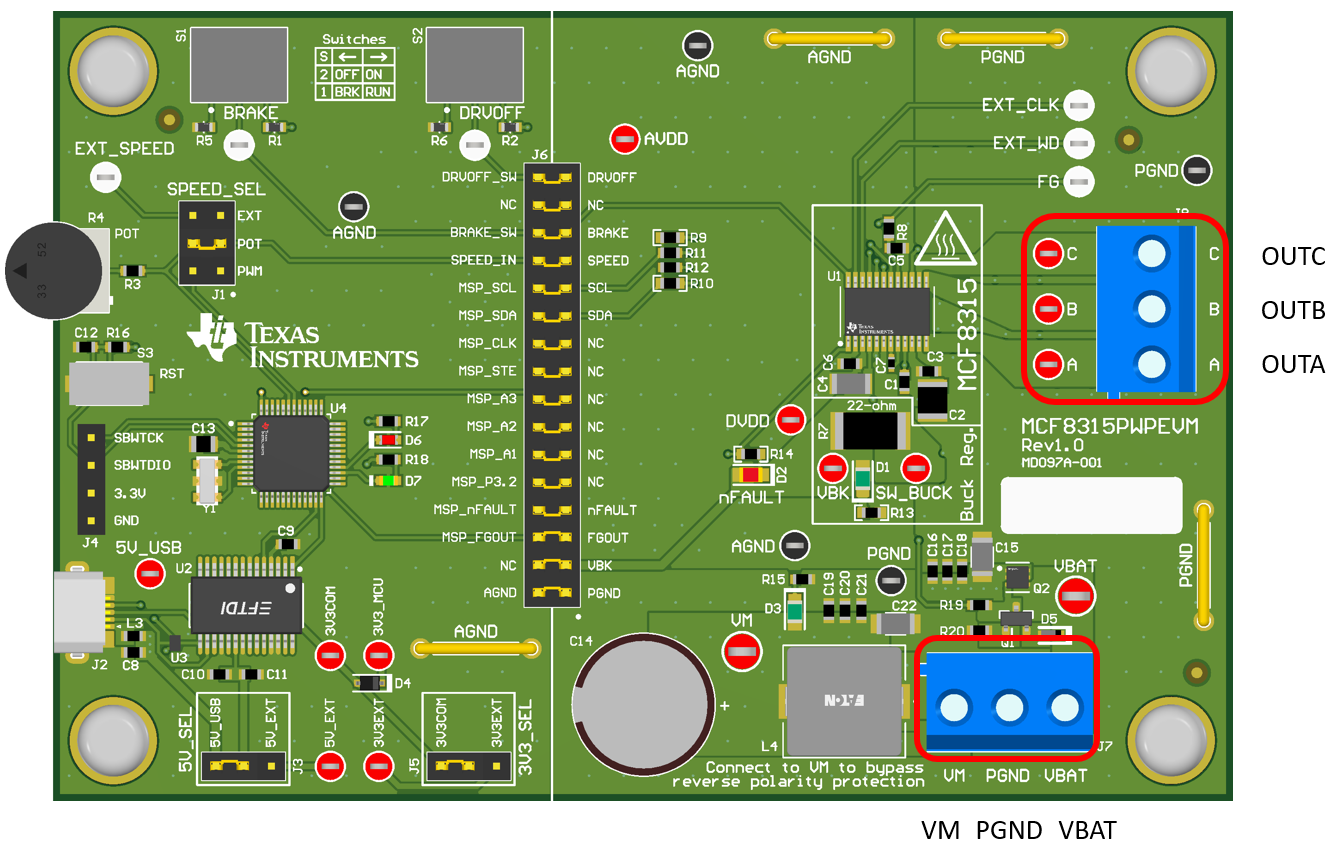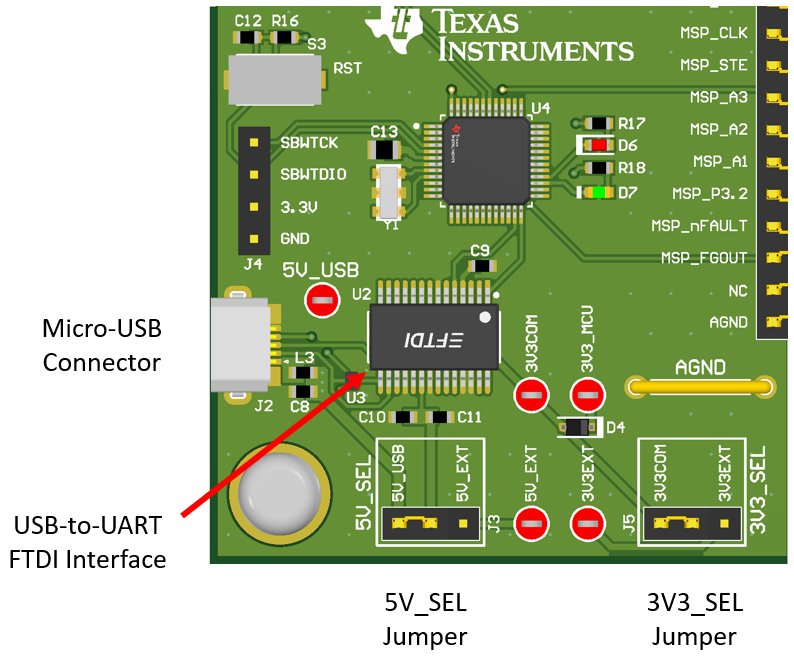SLLU384 July 2024
2.4 Connection Details
Figure 3-3 shows the connections made to the MCF8315PWPEVM to spin a 3-phase sensorless Brushless-DC motor.
A 4.5V to 35V power supply or battery is connected to the VBAT or VM and PGND terminals on connector J7. There is a reverse polarity protection and Pi filter implemented on the VBAT and PGND terminals. To bypass the reverse polarity protection and Pi filter, connect the power supply to the VM terminal or VM test point on the board and PGND.
The three phases of the BLDC motor connect directly to the A, B, and C terminals of the screw terminal connector J8 provided on the MCF8315PWPEVM.
 Figure 2-3 Connections from Motor to MCF8315PWPEVM
Figure 2-3 Connections from Motor to MCF8315PWPEVMFigure 3-4 shows where the micro-USB cable is plugged into the MCF8315PWPEVM to provide communication between the evaluation module and GUI. The USB data and 5V power from the USB are converted into UART data and 3.3V power to power the MSP430FR2355 microcontroller. The 5V from the USB power is limited to 500mA and the 3.3V from the FTDI chip is limited to 30mA. If the user wishes to supply more current to these rails, they may use the 5V_SEL jumper J3 and 3V3_SEL jumper J5 to connect external power rails.
 Figure 2-4 Micro-USB Connector and UART for MCF8315PWPEVM
Figure 2-4 Micro-USB Connector and UART for MCF8315PWPEVM